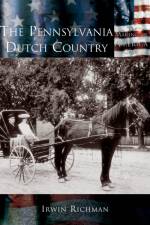Bøger i Making of America serien
-
- A Motor City History
328,95 kr. On July 24, 1701, Antoine de La Mothe Cadillac stood in the heart of the wilderness on a bluff overlooking the Detroit River and claimed this frontier in the name of Louis XIV; thus began the story of Detroit, a city marked by pioneering spirits, industrial acumen, and uncommon durability. Over the course of its 300-year history, Detroit has been sculpted into a city unique in the American experience by its extraordinary mixture of diverse cultures: American Indian, French, British, American colonial, and a variety of immigrant newcomers. Detroit: A Motor City History documents the major events that shaped this once-small French fur-trading outpost across three centuries of conflict and prosperity. Through informative text and a variety of imagery, readers experience firsthand the struggles of the nascent village against raiding Indian tribes and the incessant political and military tug of war between the colonial French and English, and then American interests. Like many other major cities across the United States, Detroit played a pivotal role in establishing the country''s economic and industrial power in the nineteenth and twentieth centuries, serving as a center for its well-known civilian and military mass-production resources. This visual history provides insight into Detroit''s rapid evolution from a hamlet into a metropolis against a backdrop of important community and national affairs: the decimating fire of 1805, the War of 1812, the Civil War, the Industrial Revolution, the Great Depression, and both world wars.
- Bog
- 328,95 kr.
-
- The Driven City
328,95 kr. Surrounded completely by the city of Detroit, Hamtramck is today home to 24,000 residents, but its small size-just 2.1 square miles-belies its expansive history and the influence this remarkable community has had far beyond its borders.Founded as a township in 1798, Hamtramck remained primarily a rural area until the early twentieth century, when auto pioneers John and Horace Dodge opened a factory on the south end of town. In just 20 years, the city''s population increased by a staggering 1,600 percent. The majority of these newest residents were Polish immigrants, who brought with them a strong work ethic, a rich culture, a genuine joy for living, and an intense appreciation for democracy. Legendary to this day for its fiery politics, the solidly Democratic Hamtramck openly flaunted Prohibition, received a visit from President Franklin D. Roosevelt, strongly supported the early labor unions, and even served as a key headquarters for the Communist Party in North America. In Hamtramck: The Driven City, an engaging narrative combined with more than 100 black-and-white images will take readers on a fascinating journey into the past and breathe new life into the memorable characters and events, the conflicts and scandals that formed the city''s distinctive identity.
- Bog
- 328,95 kr.
-
328,95 kr. Documenting the history of Lake Winnipesaukee from its early Native American heritage to the lasting legacy of the first American settlers.A world unto itself, Lake Winnipesaukee and its environs have attracted and sustained a variety of cultures over the past centuries from early American Indian tribes to New World settlers to today's seasonal tourists. Whether Indian hunter, aspiring pioneer or modern-day angler, each, in turn, fell for the region's wild allure: its sheer natural beauty, fertile soils, and waters teeming with an assortment of fish, including great quantities of shad, salmon, pickerel, smelt, and trout. Within this magnificent setting, scores of hardy and resolute frontier men and women worked tirelessly to fashion homes and towns along the bays, tributaries, islands and shoreline of the lake. With over 150 accompanying illustrations, the many stories recorded in this unique volume evoke memories of a simpler way of life, when the lake was evolving from a scattering of humble villages, like Laconia, Meredith, and Wolfeboro, and just beginning to toy with a budding tourist industry. Readers of many generations will enjoy reliving the early summer camps, upstart businesses and the variety of entertainment and recreation the lake's waters have provided, such as canoe trips, steamships rides and ski boat adventures.
- Bog
- 328,95 kr.
-
328,95 kr. PRIMARY COVERAGE AREA: Tampa, FL; Jacksonville, FL; Gainesville, FL
- Bog
- 328,95 kr.
-
328,95 kr. Taking the name Pennsylvania Dutch from a corruption of their own word for themselves, Deutsch, the first German settlers arrived in Pennsylvania in 1683. By the time of the American Revolution, their influence was such that Benjamin Franklin, among others, worried that German would become the commonwealth's official language. The continuing influence of the Church peoples-the Amish and Mennonites and others who constitute the still-vibrant Dutch culture-can be seen today in icons of Americana from apple pie to log cabins.
- Bog
- 328,95 kr.
-
338,95 kr. Harrisburg was the capital of an increasingly urban and progressive Pennsylvania at the turn of the twentieth century, with the remnants of an older, more diverse city thriving in its midst. As the streets were paved for the first time and the new state capitol building rose over a humming industrial city ready to embrace change, Harrisburg's Eighth Ward clung to its rambunctious past. When the Old Eighth stood in the way of the new Capitol Park, one journalist asked his readers to take a stroll through the streets one last time.J. Howard Wert's Passing of the Old Eighth articles-awash in images of decrepitude and vice-appeared in the Harrisburg Patriot in 1912-1913 and introduced readers to such cheats, fools, and boozers as Harry Cook and Billy Jelly. This volume presents the complete series of 35 articles chronicling the adventures of people who lived through some of the most sweeping changes in American history. More than 100 photographs-most never before published-evoke Wert's tales of a turbulent Harrisburg now long gone. Through the captivating, rarely objective voice of turn-of-the-century journalism, readers visit vanished churchyards, stroll the halls of forgotten hotels, and walk with the ghosts of gangs through crumbling alleys to brothels, gambling dens, and speakeasies. No history of Harrisburg can match this one for detailed stories of the successes and scandals of the city's good old days.Noted educator, journalist, and Civil War veteran J. Howard Wert's articles bring to life the colorful characters and day-to-day grit and drama of his time. By turns pious, hard-nosed, and folksy, Wert's prose veers wildly among literary modes but never fails to entertain. A melding of nineteenth-century moral sensibility and modern appreciation for progress makes this work as accessible to today's readers as it was to Wert's contemporaries.
- Bog
- 338,95 kr.






